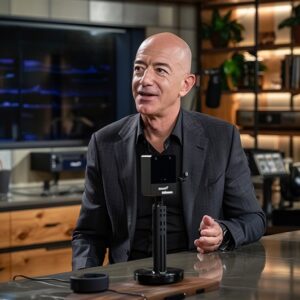Amazon is reported to be testing the machine learning ‘Sparrow’ robot arm that could handle 65 percent of its 100+ million diverse parcels.
Challenge
Although Amazon already uses robot arms called ‘Robin’ and ‘Cardinal’ to re-direct boxed-up pre-delivery items around its warehouses, the challenge has been to create a robot arm that can detect, recognise, select, and handle a huge variety of different shapes and sizes of products prior to packaging, in the handling part of its business.
Sparrow
The Sparrow robot arm leverages the technologies of computer vision and artificial intelligence (AI) to help detect and select items.
The Benefits
Amazon sees the potential benefits of Sparrow as:
– Enabling the company to work smarter, not harder, and to operate efficiently and safely.
– Enabling employees to focus their time and energy on other things by taking on repetitive tasks for them.
– Helping to drive efficiency by automating a critical part of the fulfilment process.
Replacing Human Workers?
Although Sparrow’s unique capabilities may be good news for Amazon’s Ecommerce future, it could be bad news for its human workers. The effects on jobs by increased automation at Amazon have been a concern of labour unions (the Amazon Labor Union) for some time now, although a recent study suggested that more robots were needed anyway to plug a labour shortage at Amazon. Also, some commentators have suggested that rather than creating large-scale job losses, an increase in the use of robots in Amazon warehouses could simply mean a de-skilling of the labour force (saving on training), job stagnation and insecurity.
Supporting, Not Replacing
Amazon, however, chooses to frame Sparrow as “a major technological advancement to support our employees” rather than a machine learning, highly dextrous robot that could cost many of them their jobs.
Back in September, for example, Amazon’s robotics chief Tye Brady, however, was reported as saying that the robots are not intended to replace workers but to collaborate with human workers to do a job.
Create New Kinds Of Jobs Too
Amazon has highlighted how it believes the use of Sparrow and other robots in its business has already created (and could create more) new kinds of jobs related to maintaining the robots. Amazon says, for example, “The design and deployment of robotics and technology across our operations have created over 700 new categories of jobs”.
On its ‘About Amazon’ website, the company gives the example of its Amazon Mechatronic and Robotics Apprenticeship which it says helps employees “learn new skills and pursue in-demand, technical maintenance roles” and leads to a 40 per cent increase in the pay of participants.
What Does This Mean For Your Business?
With Amazon being the largest manufacturer of industrial robots in the world, and with Sparrow being another of several types of robot arms already in use in Amazon warehouses, it is highly likely that automation plus the pursuit of benefits like efficiency, safety, and 24-hour / 365 days a year working (and no protests) looks likely to continue. Although unions have protested about automation, some have suggested that more unionisation could simply mean a harder push for automation.
Amazon’s re-framing of Sparrow being a robot that will help rather than replace workers and even create more tech maintenance-based jobs sounds good, but with more than 1.6 million people on the Amazon payroll, and more robots like Sparrow that can ‘learn’ to keep improving, its hard to see how many people at the company’s warehouses aren’t going to end up being made redundant over time. For Amazon, however, the efficiencies automation could bring are likely to make the company even more competitive and powerful.




